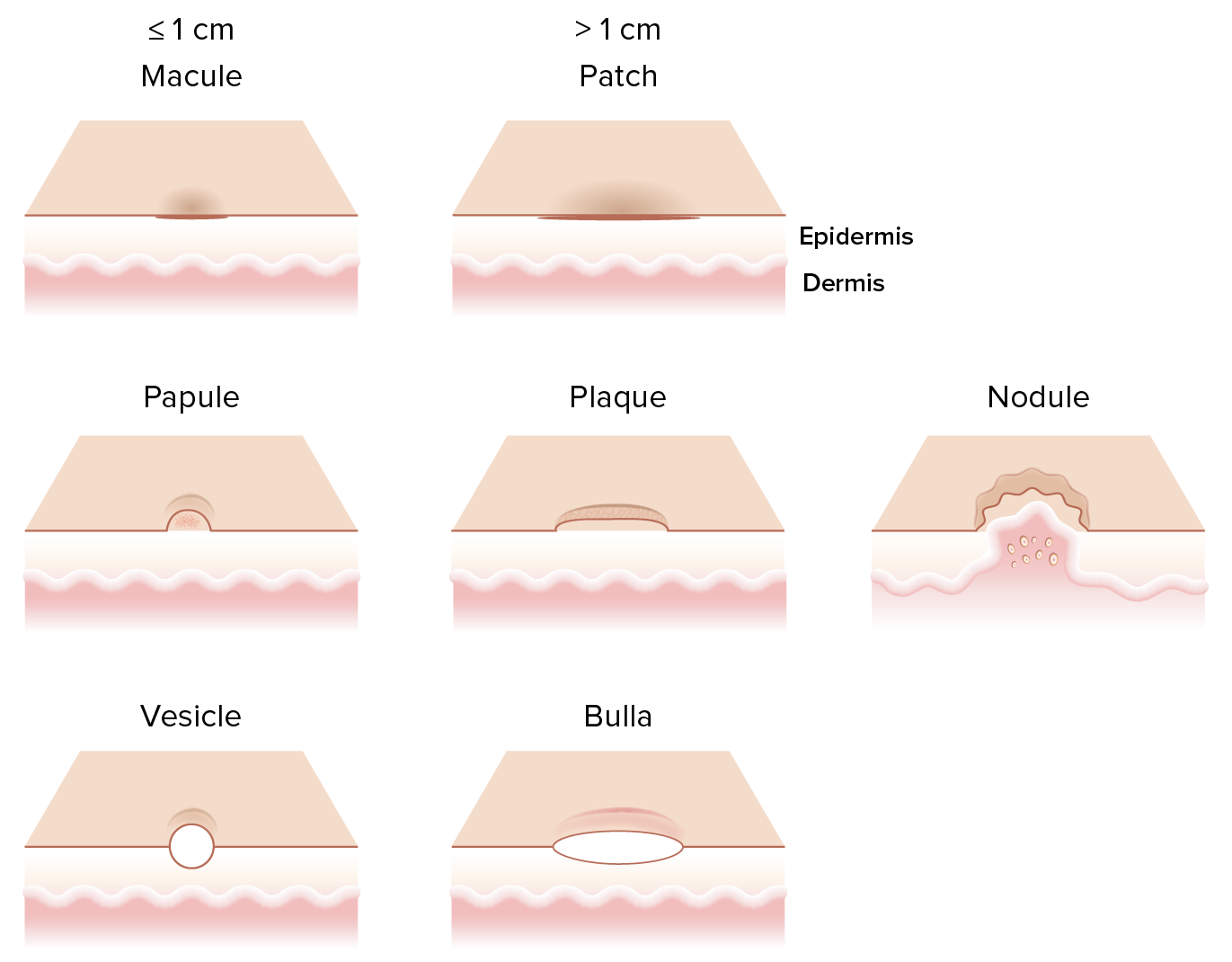Playlist
Show Playlist
Hide Playlist
Freckles
-
Reference List Pathology.pdf
-
Slides Freckles Dermatopathology.pdf
-
Download Lecture Overview
00:01 Welcome. Let's talk about freckles. 00:04 Otherwise known as F highlights. So freckles are small little hypopigmented macules. 00:09 So they're flat on the surface of the skin. 00:11 They don't have a real distinct border. 00:15 The epidemiology of these is that you typically start seeing them in individuals who are going to be prone to them at ages 2 to 3. 00:24 There is going to be a higher incidence if you are redheaded or blond or lightly pigmented skin. That's because you can see these focal accumulations of melanocytes making more melanin. It will increase the presence of the freckles or F alleles will increase during adolescence and certainly will increase with sun exposure. 00:46 With time, they tend to go away. 00:49 So we tend to get more of a uniform expression of melanin in made by the melanocytes. So you don't get these discrete little macules. 00:58 The pathophysiology of this there is a genetic predisposition. 01:02 As I already said, if you are blond or redheaded you will tend to see more of these, particularly in youth. 01:09 The genetic predisposition has to has to do with mutations. 01:13 Loss of function. Mutations in the Melanocortin one receptor and those gene variants typically lead to redheaded individuals. 01:22 Instead of making eumelanin, they tend to make feel melanin story for another day. But a good example here is Jessica Chastain. 01:30 Although she looks freckled right now, in her youth, I'm told that she had a lot, and she's probably covering some of those up with makeup. The story all begins and ends with melanocytes. 01:43 So the melanocytes you remember are cells that are neural crest arrived. 01:47 They live in the basal layer of the skin. 01:50 Their job is to make melanin. 01:52 Melanin is going to protect you against UV damage in your epidermis. 01:58 They make the melanin and they release it into the surrounding epithelium. 02:03 And that's taken up by the epithelial cells. 02:07 And as they migrate their way up through the skin, they will carry and take that melanin with them. 02:13 So in neighboring cells you will see a varying amount of melanin. 02:18 What happens in freckles or epaulets. 02:22 They're discreet areas where we have too much melanin production. 02:25 The little melanocytes in that area just get a little bit too exuberant and enthusiastic and make too much melanin locally. 02:34 Clearly it can be driven by UV and also those other genetic mutations that we talked about. 02:41 So the clinical presentation. 02:43 If you've been a kid, you remember what it was like for most of you, not always seen well in people who are hyper pigmented, their most numerous on sun exposed skin, that would be the face, particularly the malar eminence over the nose and the cheekbones there on the hand dorsum there on the upper trunk. 03:04 Uh, that pigmentation, the number of the freckles, the size will increase with sun exposure. 03:10 And those individuals who are going to be prone to developing them. 03:15 Solar lentigines or age spots are similar to freckles, but they are larger. They tend to occur in older individuals like me, um, and they increase with greater lifetime sun exposure. 03:29 Those may also be due to underlying solar elastosis and UV damage, but they do represent areas where there is focal hyperpigmentation. 03:38 How do we diagnose this? Kind of by inspection. 03:41 So you see it. It's in a sun exposed area. 03:44 They're flat. They're painless. 03:46 They come and go with sun exposure. 03:48 Typically in little kids, blond or redheaded you can make the diagnosis. So what do we do about this? Not much. They are benign. 03:59 My daughter hated her freckles and wanted wanted it treated. 04:02 We told her they would go away. 04:04 And sure enough, they eventually did. 04:06 But you can. If they don't go away, you can treat them for cosmetic purposes. 04:11 You can minimize the amount that you get by using sun protective measures. 04:16 Sunblock, topical retinoids, and pigmenting agents can reduce the kind of number and the severity of the pigmentation. 04:25 And you can use lasers to zap the melanocytes and also neutralize the pigments. 04:32 So with that, talked about a very simple and benign topic freckles, but also really common thanks.
About the Lecture
The lecture Freckles by Richard Mitchell, MD, PhD is from the course Disorders of Maturation and Pigmentation of the Skin.
Included Quiz Questions
What is the underlying cellular mechanism that causes freckle formation in the skin?
- Focal areas of increased melanin production by melanocytes
- Decreased melanocyte cell death
- Increased keratinocyte proliferation
- Abnormal melanocyte migration
- Reduced melanin degradation
Which patient population is most likely to develop freckles starting at ages 2-3?
- Red-haired individuals with light skin
- Dark-haired individuals with olive skin
- Elderly individuals with sun damage
- Middle-aged adults with dark skin
- Black-haired individuals with fair skin
Customer reviews
5,0 of 5 stars
| 5 Stars |
|
5 |
| 4 Stars |
|
0 |
| 3 Stars |
|
0 |
| 2 Stars |
|
0 |
| 1 Star |
|
0 |




